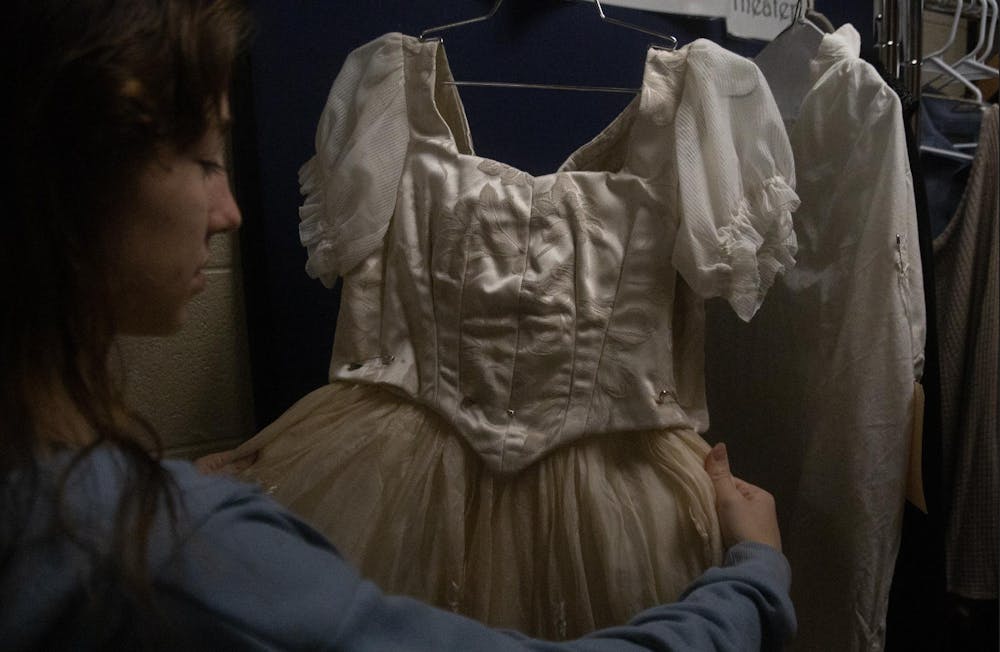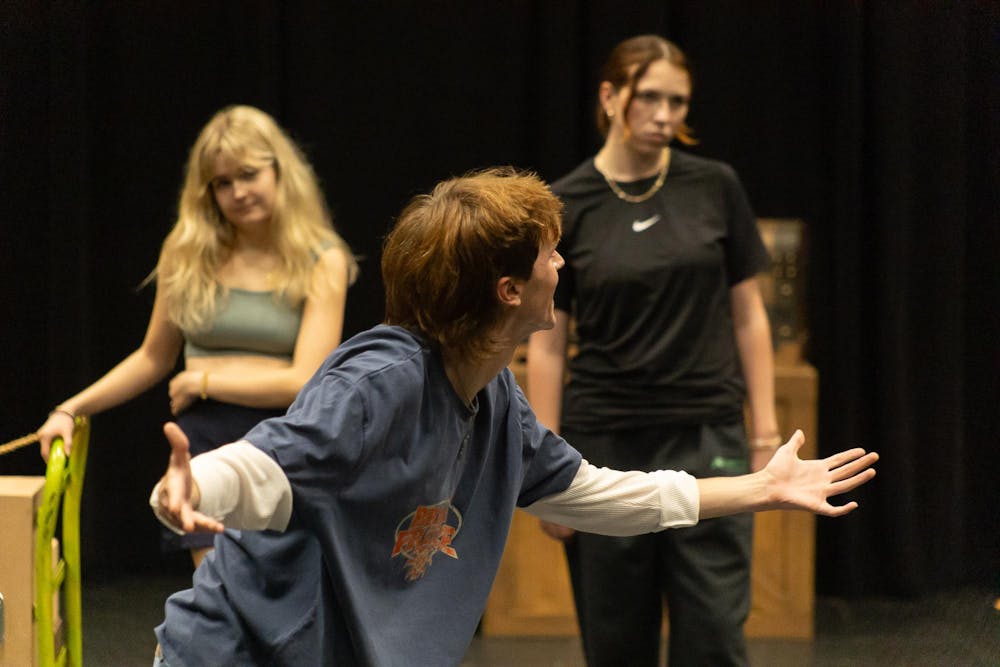In preparation for the fall play, costume designer and junior Brooke Gustafson has been pulling pieces from Elon’s costume shop, Amazon and thrift stores. Elon’s performance of “Rosencrantz and Guildenstern Are Dead” draws inspiration from the play’s themes of absurdism by featuring costumes with both Elizabethan and contemporary styles.
“It’s all absurd, and there’s not really a lot of rhyme or reason,” Gustafson said. “My costumes, since they do take place over a variety of time periods, help propel that theme of the play.”
The play expands upon two courtiers from Shakespeare’s “Hamlet” as they face existential questions in a comedic tone. Showings will run from Oct. 4, 5, 7 and 8 at 7:30 p.m., as well as two matinees on Oct. 5 and 6 at 2 p.m. in Scott Studios. The show has a run time of two hours and 20 minutes, including a 15-minute intermission between the two acts. Tickets are available for $15 or free with an Elon ID.
“Rosencrantz and Guildenstern Are Dead” was written by Tom Stoppard in the early 1960s, when absurdist works were in their prime as a result of post-war disillusionment. Gustafson described absurdism as a philosophical theory in which the universe is chaotic and nonsensical, which plays into her costuming.

The characters’ costume style depends on their awareness of being in a play. Those who are less aware — such as Hamlet and Ophelia — are more Elizabethan, while those who are more aware — such as the tragedians or The Player — are more contemporary. Rosencrantz and Guildenstern, the leads, fall somewhere in the middle. In total, there are around 20 costumes for about 15 characters.
“You have to draw the line between making sure the audience isn’t incredibly confused with what they’re seeing, and yet still get the concept that it is absurdist,” Gustafson said.
Although the show is almost 60 years old, it still remains applicable to a modern audience, according to theatre professor and director Kevin Otos. To him, the play brings home the fact that time on Earth is limited and shouldn't be wasted.
“The thing that’s relevant about this play,” Otos said, “is the questions it asks and the exploration of our relationship with our inevitable death.”
The play explores death as a comedic theme, meaning that audiences should come ready for a laugh, sophomore co-lead Arlan Visser, who plays Guildenstern, said. Visser insisted the play has something to offer everyone, despite it taking place within a more than 400-year-old Shakespearean tragedy. In addition to physical and slapstick humor, she said there are also a lot of call-backs and references, which build on the show’s humor.
“There’s a lot of rhetoric and linguistic intricacies that are funny to people who have studied English, and then there are parts that are funny to people who just think that most things are funny,” Visser said.

Sophomores Owen Harsch and Arlan Visser, who play Rosencrantz and Guildenstern, rehearse Sept. 24 in Scott Studios.
Both leads discussed the difficulties that come from playing characters who are on stage for the entirety of the show. Visser’s favorite aspect of the play, the script, has also been the most challenging part of the process. Sophomore co-lead Owen Harsch, who plays Rosencrantz, agreed, saying that it has been both difficult and rewarding.
“It takes physical endurance, mental endurance. It’s been challenging but it’s been, I think, my favorite part,” Harsch said.
From the production team to the actors, everyone involved with the show stated that audiences should come to “Rosencrantz and Guildenstern Are Dead” for the humor and the work that was put into it.
“I have really enjoyed seeing it come together. I think anything in the arts is just such a beautiful process to go from 0% done to 100% finished,” Gustafson said. “It is so exciting because the process is almost over and the end result is about to take place.”


